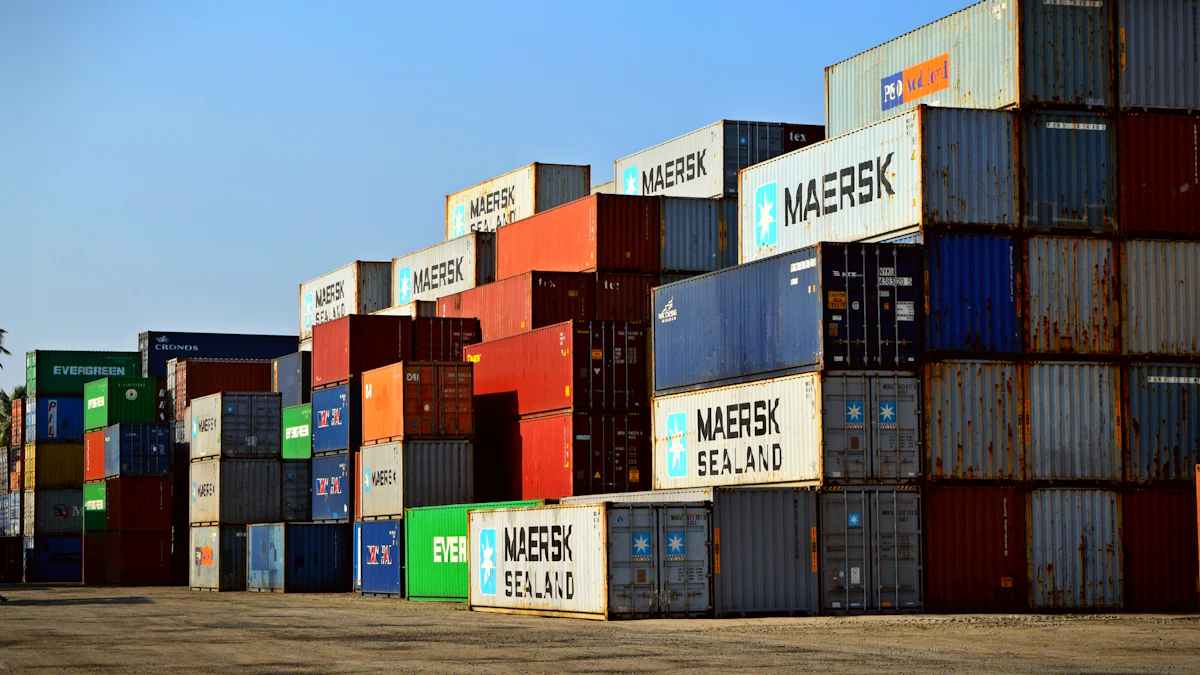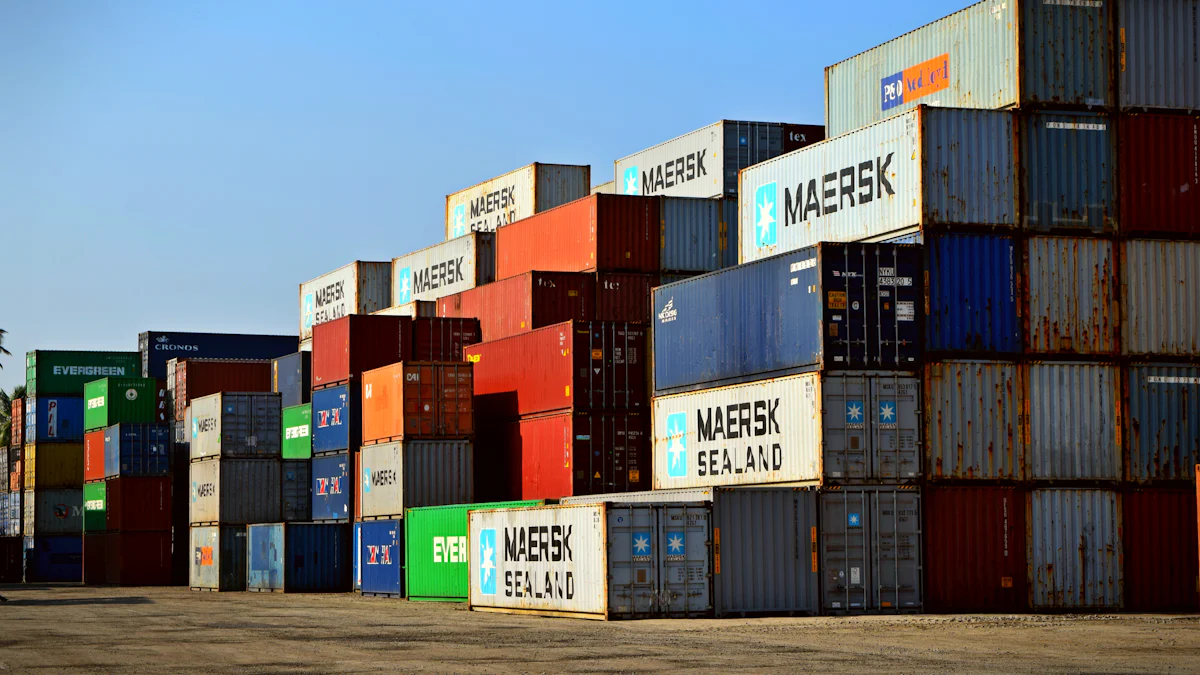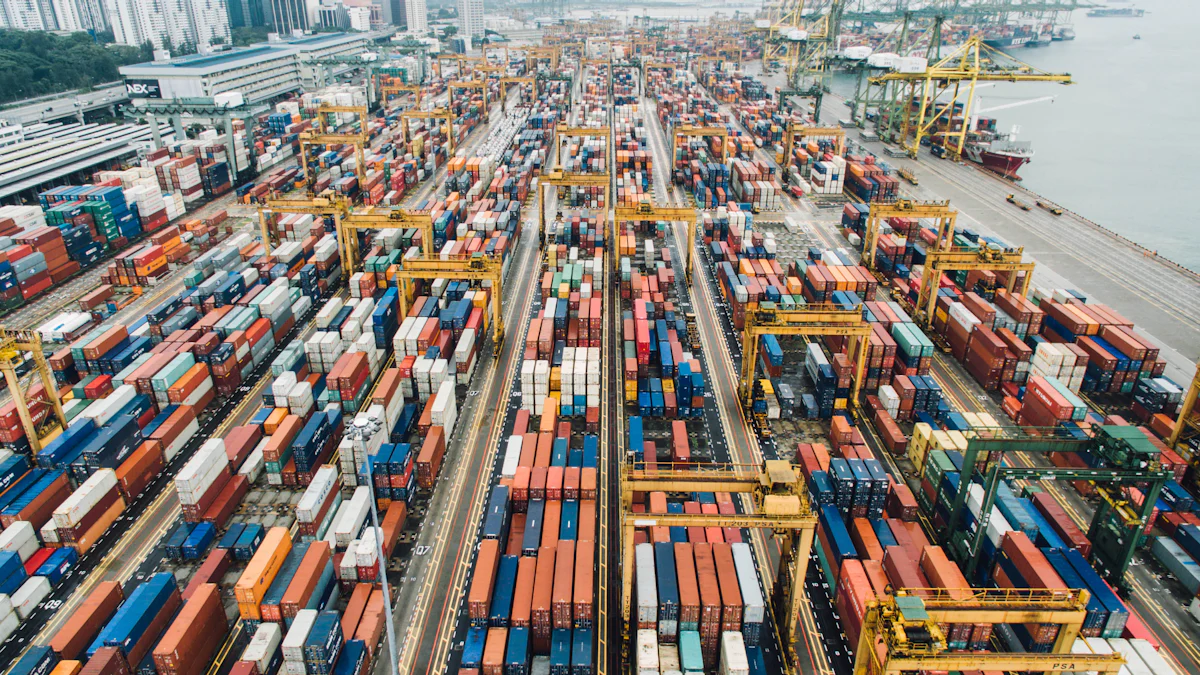Digital Logistics in 2024: Trends and Predictions for the Next Decade

Digital logistics represents the integration of advanced technologies into logistics operations. Companies must stay updated with trends and predictions to maintain a competitive edge. The logistics industry in 2024 will experience significant transformations driven by AI, big data, and IoT. These advancements will optimize supply chain management, enhance customer satisfaction, and reduce operational costs. The global digital logistics market is expected to reach $26.9 billion by 2024, reflecting the growing importance of digital transformation in the industry.
Current State of Digital Logistics
Adoption of Digital Technologies
Internet of Things (IoT)
The Internet of Things (IoT) has revolutionized logistics operations. IoT devices provide real-time tracking and monitoring of shipments. Sensors attached to packages offer data on location, temperature, and humidity. This information ensures the safe and timely delivery of goods. Companies have seen increased efficiency and productivity through IoT implementation.
Artificial Intelligence (AI) and Machine Learning
Artificial Intelligence (AI) and Machine Learning enhance decision-making in supply chain management. AI models analyze vast amounts of data to predict trends and optimize routes. Companies like Zunshi use AI for dynamic ETA predictions and inventory management. This technology reduces risks and uncertainties in logistics operations.
Blockchain Technology
Blockchain technology ensures transparency and security in logistics transactions. Each transaction gets recorded in a decentralized ledger, making it tamper-proof. This technology helps in tracking the origin and journey of goods. Blockchain also facilitates smoother customs clearance processes, reducing delays.
Challenges and Opportunities
Data Security and Privacy
Data security remains a significant concern in digital logistics. The integration of IoT and AI increases the amount of data generated. Protecting this data from cyber threats is crucial. Companies must invest in robust cybersecurity measures to safeguard sensitive information.
Integration with Legacy Systems
Integrating new technologies with existing legacy systems poses challenges. Many logistics companies still rely on outdated software. Upgrading these systems requires time and resources. However, successful integration can lead to streamlined operations and cost savings.
Workforce Adaptation
The adoption of digital technologies necessitates workforce adaptation. Employees need training to handle new tools and systems. Resistance to change can slow down the adoption process. Companies must focus on upskilling their workforce to leverage the benefits of digital logistics.
Key Trends in 2024

Automation and Robotics
Autonomous Vehicles
Autonomous vehicles will revolutionize transportation within the logistics industry. Companies will deploy self-driving trucks for long-haul routes, reducing the need for human drivers. These vehicles will use advanced sensors and AI to navigate roads safely. The adoption of autonomous vehicles will lead to lower transportation costs and increased efficiency.
Warehouse Automation
Warehouse automation will transform storage and distribution centers. Robots equipped with AI will handle tasks such as picking, packing, and sorting goods. Automated systems will optimize inventory management by tracking stock levels in real-time. This technology will reduce labor costs and minimize errors in order processing.
Advanced Analytics and Big Data
Predictive Analytics
Predictive analytics will become a cornerstone of digital logistics. Companies will use data analysis to forecast demand and optimize supply chain operations. AI models will analyze historical data to predict future trends, enabling better decision-making. Predictive analytics will help businesses reduce risks and improve customer satisfaction.
Real-time Data Processing
Real-time data processing will enhance the responsiveness of logistics operations. IoT devices will provide continuous updates on shipment status and environmental conditions. Companies will use this information to make immediate adjustments to routes and schedules. Real-time data processing will ensure timely deliveries and reduce operational disruptions.
Digital Supply Chain Solutions
Comprehensive digital solutions like Jusda's Manufacturing Digital Supply Chain Solution will become standard. These solutions will offer full resource intelligent control, real-time collaborative platforms, and end-to-end automation, enhancing the overall efficiency and responsiveness of supply chains.
Sustainable Logistics
Green Technologies
Green technologies will play a crucial role in making logistics more sustainable. Companies will adopt electric vehicles and renewable energy sources to reduce carbon emissions. Energy-efficient equipment will replace traditional machinery in warehouses. Green technologies will help businesses meet environmental regulations and appeal to eco-conscious consumers.
Circular Supply Chains
Circular supply chains will promote sustainability by minimizing waste. Companies will design products for reuse and recycling, extending their lifecycle. Reverse logistics will facilitate the return and refurbishment of used items. Circular supply chains will reduce the environmental impact of logistics operations and support a circular economy.
Predictions for the Next Decade

Evolution of Supply Chain Management
End-to-End Visibility
End-to-end visibility will become a standard in digital logistics. Companies will track every step of the supply chain in real-time. This visibility will enhance decision-making and reduce inefficiencies. Advanced sensors and IoT devices will provide continuous updates on shipment status. Businesses will gain insights into inventory levels, transit times, and potential disruptions.
Collaborative Platforms
Collaborative platforms will revolutionize supply chain management. These platforms will integrate logistics, people, processes, information, technology, and finance. Real-time collaboration among suppliers, manufacturers, service providers, and customers will become seamless. Platforms like JusLink by Jusda will set the benchmark for operational efficiency. Enhanced communication will lead to better resource utilization and faster problem resolution.
Emerging Technologies
Quantum Computing
Quantum computing will transform digital logistics. Quantum computers will process complex calculations at unprecedented speeds. Logistics companies will solve optimization problems that were previously unsolvable. Quantum algorithms will improve route planning, inventory management, and demand forecasting. The adoption of quantum computing will lead to significant cost savings and efficiency gains.
5G Connectivity
5G connectivity will enhance digital logistics operations. The high-speed network will enable real-time data transmission across the supply chain. Autonomous vehicles, drones, and IoT devices will benefit from low latency communication. 5G will support advanced applications such as augmented reality for warehouse management. Logistics companies will achieve faster response times and improved operational accuracy.
Regulatory and Compliance Changes
Global Trade Policies
Global trade policies will impact digital logistics. Governments will introduce new regulations to address evolving trade dynamics. Companies must stay updated with these changes to ensure compliance. Trade agreements, tariffs, and customs procedures will influence supply chain strategies. Adapting to regulatory shifts will be crucial for maintaining global competitiveness.
Environmental Regulations
Environmental regulations will shape the future of digital logistics. Governments will enforce stricter emission standards and sustainability practices. Companies will adopt green technologies to meet these requirements. Electric vehicles, renewable energy sources, and eco-friendly packaging will become standard. Compliance with environmental regulations will enhance brand reputation and customer loyalty.
Digital logistics will continue evolving rapidly, driven by AI, big data, and IoT. Key trends such as automation, advanced analytics, and sustainable practices will shape the industry's future. Companies must embrace adaptability and innovation to remain competitive. The integration of emerging technologies like quantum computing and 5G connectivity will further enhance operational efficiency. Agility, transparency, and technological integration will be crucial for thriving in the logistics industry. Digital transformation is not just an option; it is essential for future success. Efficient and transparent logistics solutions will drive market growth and improve productivity.
See Also
Navigating Tomorrow: Logistics Revolutionized by Digital Innovation
Revolutionary Logistics Tech: Exploring Future Possibilities
Virtual Replicas: Transforming the Landscape of Supply Chains
Artificial Intelligence in Supply Chains: Shaping Future Logistics
